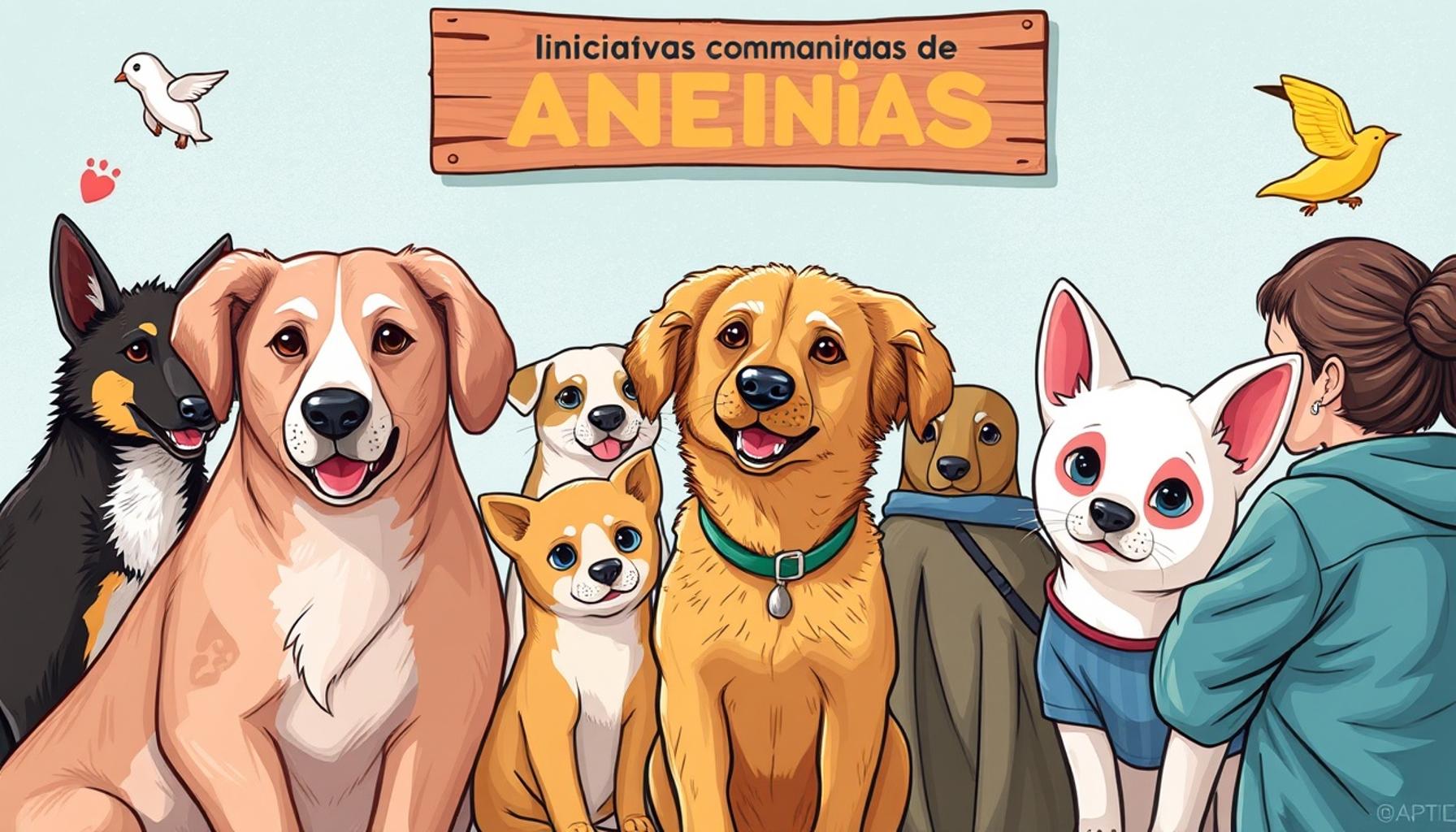Pet Adoption in Times of Crisis: How Shelters Are Adapting

Adapting to New Realities
In light of the challenges posed by significant economic fluctuations and public health crises, animal shelters across the United States have shown remarkable resilience and creativity. With adoption rates swinging unpredictably, these organizations have been compelled to rethink traditional models, adopting innovative methods to connect people with furry companions in need of loving homes.
Virtual Adoption Events
One of the most significant shifts has been the transition to virtual adoption events. Shelters have embraced the digital landscape, organizing online meet-and-greets that allow potential adopters to interact with animals without having to visit in person. For instance, organizations like the ASPCA host live-streaming events on social media platforms to showcase cats and dogs available for adoption. These events not only provide a safe and convenient way for people to engage with pets, but they also widen the reach of shelters, allowing them to attract interest from individuals who might not have been able to visit in person due to geographical or health-related barriers.
Flexible Foster Programs
Another evolution has been the expansion of flexible foster programs. Communities are stepping up, offering temporary homes for pets until they find their forever families. This model not only alleviates stress on shelters but also creates a nurturing and enriching environment for the animals. For example, some shelters in California have implemented “Foster to Adopt” programs, allowing families to take pets home on a trial basis before making a permanent commitment. This arrangement gives both the adoptee and the adopter a chance to assess compatibility while easing the burden on crowded facilities.
Increased Support Services
Recognizing that pet ownership can be a daunting responsibility during tough economic times, many shelters are prioritizing increased support services for adopters. This includes providing comprehensive pet care guides, access to training resources, and financial aid for veterinary services. Programs like Petco Foundation’s “Pet Care Help” initiative aim to support pet owners facing financial hardships by offering discounts or free health services. Such efforts underscore a commitment to ensuring that once pets are adopted, they remain in loving homes, which ultimately reduces the likelihood of animals being returned to shelters.
The Bigger Picture
The adaptations by these organizations are not mere reactions to external pressures; rather, they symbolize a profound commitment to animal welfare and the wellbeing of the community. As economic conditions fluctuate, shelters are not just responding to crises, but are also proactively exploring sustainable strategies to maintain successful pet placements. This evolution emphasizes the strong, often healing bond between animals and humans, especially during uncertain times.

Delving into how shelters navigate these challenges can unveil valuable insights into the realm of pet adoption, showcasing both struggles and successes. Whether you are contemplating adoption or looking to support your local shelter, understanding these transformative changes is crucial. Each effort made by shelters contributes not just to the lives of the animals, but also to the emotional and mental health of families and individuals seeking companionship during difficult periods.
DISCOVER MORE: Click here for insights
Innovative Strategies for Connection
As shelters navigate the landscape of pet adoption during crises, they are continually implementing innovative strategies that not only keep their doors open but also foster a sense of community. The urgency to adapt to fluctuating circumstances has propelled organizations to explore new avenues of engagement with potential adopters. By harnessing technology and rethinking existing frameworks, shelters are building bridges between pets and people in remarkable ways.
Harnessing Social Media Power
One of the most impactful tools shelters have utilized in recent times is social media. Platforms like Instagram and Facebook are now serving as virtual windows into shelters, allowing organizations to share cute photos, heartwarming stories, and live adoption events from the comfort of people’s homes. These posts not only showcase the animals but also emphasize their unique personalities, helping potential adopters to establish emotional connections. In addition, the use of visually appealing content, such as engaging videos and memes featuring adoptable pets, has proven to be a successful strategy in attracting younger demographics who might be considering adding a furry friend to their lives.
Collaborative Efforts with Local Businesses
Community collaboration has taken on heightened importance, as shelters partner with local businesses to support each other during tough times. Collaborative initiatives can include:
- Pet supply drives: Local stores team up with shelters to hold collection events for food, toys, and grooming supplies.
- Cross-promotional campaigns: Businesses might promote pet adoption by featuring shelter animals in their advertisements, not only helping the shelter but also driving foot traffic to the store.
- Discount programs: Some establishments offer discounts to adopters, encouraging the community to take that next step toward welcoming a pet into their home.
These creative partnerships not only enhance visibility for the shelter but also strengthen community ties, creating a more sustainable environment for animal welfare.
Membership and Loyalty Programs
To further engage the public, some shelters have launched membership and loyalty programs designed to encourage repeat support and involvement. These initiatives offer benefits like exclusive events, merchandise discounts, and behind-the-scenes access to shelter operations. By cultivating a sense of belonging and investment among supporters, shelters can create dedicated advocates for animal welfare, which is especially critical during times of uncertainty.
The aforementioned strategies reflect a dynamic shift in how shelters approach pet adoption, moving beyond traditional methods toward more innovative and community-focused solutions. As they continue to adapt to crises, these organizations are not only finding new ways to connect pets with loving families but also reinforcing the notion that the bond between humans and animals is indispensable, helping to ease both emotional and social challenges faced during difficult times.
As shelters navigate the complexities of a crisis, they are continuously adapting to ensure both public safety and the well-being of animals in their care. One significant adaptation has been the shift towards virtual pet adoption processes. Many shelters are leveraging technology to facilitate online meet-and-greets, virtual tours, and application submission, making it easier for potential adopters to connect with pets from the comfort of their homes. This innovation not only minimizes physical contact but also increases the reach of shelters to potential adopters outside their immediate geographic area.Additionally, many shelters have embraced foster programs that allow animals to live in temporary homes until permanent placements can be found. This approach reduces crowding within shelters and offers pets a more nurturing environment while awaiting adoption. It also helps to engage the community, as more people are stepping up to provide foster care, thus creating a robust support network for animal welfare.Furthermore, shelters are enhancing their social media presence, sharing stories and pictures of pets available for adoption. Creative campaigns, such as themed adoption days or spotlight features on individual animals, not only attract interest but also highlight the unique personalities of pets, making them more relatable to potential adopters. These innovative strategies reflect a broader trend in which shelters are becoming more community-focused, promoting education on responsible pet ownership, and encouraging people to consider adoption during challenging times. The collaborative efforts of animal rescue organizations, local governments, and community volunteers are essential in ensuring the success of these initiatives.In this evolving landscape, it is crucial to recognize the profound impact of pet adoption on mental health, especially during crises. Companionship provided by pets can alleviate feelings of loneliness and anxiety, making fostering connections through the adoption process even more vital now than ever. Understanding these facets of adoption not only benefits the animals but enriches the lives of those who choose to welcome them into their homes. By embracing these changes, shelters are not only surviving but are finding inspiring ways to thrive, ensuring a brighter future for both pets and people alike.
DISCOVER MORE: Click here to learn about customized accessories for your pet’s well-being
Expanding Outreach Beyond Traditional Methods
As the world grapples with various crises, shelters are not only refining their engagement strategies but also broadening their outreach to touch different segments of the community. This involves targeting those who may not have previously considered adoption or may face barriers in the traditional rescue process. Shelter organizations have begun to implement programs aimed at making pet adoption more accessible and appealing to a wider audience.
Virtual Adoption Events
In-person adoption events have historically been a cornerstone of shelter initiatives, but the advent of social distancing has led to the rise of virtual adoption events. These online gatherings allow potential adopters to meet pets through live streams or video profiles while learning about their backgrounds and requirements directly from shelter staff. Coupled with interactive Q&A sessions, these virtual platforms eliminate geographical barriers, enabling anyone with internet access to participate, regardless of their location. For instance, numerous shelters across the U.S. have hosted virtual fairs that not only showcase adoptable animals but also provide resources and guidance for new pet owners.
Fostering Flexibility
Another significant adaptation is the promotion of foster programs. During times when shelters may face capacity issues or health concerns, fostering allows pets to remain in temporary homes until they find permanent families. Shelters have been proactive in communicating the importance of fostering by highlighting the benefits it has for both the animals and the community. For example, many organizations have developed specialized training for fosters and provided essential supplies, ensuring that caregivers feel supported and capable in their roles. This approach has proven effective; according to a recent survey from the ASPCA, shelters that expanded foster programs saw a marked increase in both fostering and adoption rates.
Enhanced Support Services
Recognizing that the adoption journey extends beyond just finding a pet, many shelters are focusing on providing enhanced support services for adopters. This can take the form of post-adoption assistance, including behavior consultations, training resources, and access to veterinary services. By offering guidance during the adjustment period, shelters aim to reduce the stress that can accompany pet ownership, thereby decreasing the likelihood of post-adoption returns. Programs that involve follow-ups and check-ins with new pet families have shown a strong correlation with higher satisfaction rates among adopters.
Community Education Programs
Educational outreach is gaining momentum as shelters prioritize informing the community about responsible pet ownership and the impact of adopting during a crisis. Workshops, webinars, and informational resources aim to assist potential adopters in understanding the long-term commitment required for pet ownership. By addressing common misconceptions and barriers related to adoption—such as the idea that shelter pets are problematic—these initiatives foster a more informed public prepared to make positive decisions. Engaging with local schools or community centers also extends their reach, targeting families who may be considering welcoming a pet into their lives.
Through these evolving strategies, animal shelters across the United States are not merely surviving but thriving under challenging circumstances. Their ability to innovate while forming deeper connections with the community showcases a resilience that not only benefits the pets in their care but also fosters a spirit of kindness and compassion during troubling times.
DIVE DEEPER: Click here for effective training tips
Conclusion
In the face of unprecedented challenges, animal shelters are proving to be adaptable and resourceful in their mission to promote pet adoption. By leveraging innovative approaches such as virtual adoption events, shelters have successfully connected potential adopters with pets, breaking down geographical barriers that traditionally limited engagement. The emphasis on fostering creates a vital safety net for animals needing homes, allowing shelters to alleviate overcrowding while ensuring continuous care.
Moreover, the development of enhanced support services for adopters demonstrates a commitment to long-term relationships between pets and their new families. This proactive approach not only enriches the adoption experience but significantly minimizes the likelihood of returns. Meanwhile, community education programs are fostering a well-informed public, encouraging responsible pet ownership and dispelling myths associated with shelter animals.
Overall, the evolution of these strategies amid crises highlights the resilience and dedication of shelters across the United States. They are not only finding ways to sustain their operations but also enriching the lives of animals and people alike. As we navigate future challenges, continued support for these initiatives can lead to a greater understanding of the transformative power of pet adoption—a true lifeline not just for the animals but also for individuals and families seeking companionship during difficult times.


